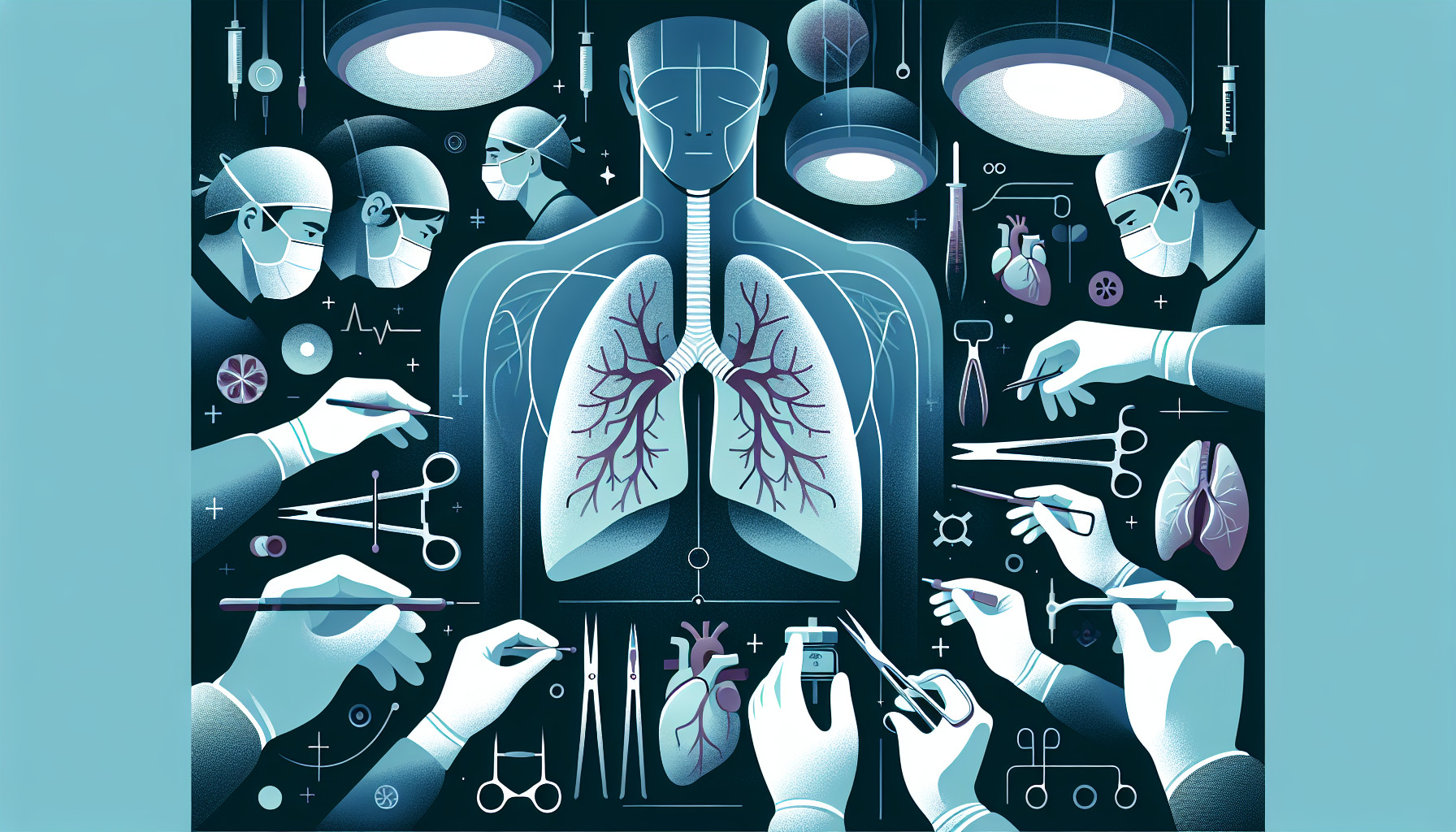Our Summary
This research paper looks into the effects of small particulate air pollution (PM2.5) on people who have had lung transplants. The researchers used data from the United Network for Organ Sharing, which includes patients receiving transplants across all active US lung transplant programs. They found that people who lived in areas with higher levels of PM2.5 pollution were more likely to experience either death or transplant failure. Specifically, if a person was exposed to an annual PM2.5 level higher than the standard set by the Environmental Protection Agency (12 μg/m3), the risk of death or transplant failure increased. This was the case even after adjusting for other factors. The researchers concluded that higher levels of PM2.5 pollution were linked to a higher chance of death or transplant failure in lung transplant recipients. They suggested further research to better understand this link and to guide strategies to reduce risk at both individual and population levels.
FAQs
- What impact does small particulate air pollution (PM2.5) have on lung transplant recipients according to the research?
- How does the level of PM2.5 pollution affect the risk of death or transplant failure in lung transplant recipients?
- What further steps do the researchers suggest based on the link found between PM2.5 pollution and lung transplant outcomes?
Doctor’s Tip
A doctor may advise a patient who has had a lung transplant to be diligent about avoiding exposure to air pollution, particularly small particulate matter (PM2.5). This may involve staying indoors on days with high pollution levels, using air purifiers in the home, and wearing a mask when going outside in polluted areas. It is important for lung transplant recipients to prioritize their respiratory health and take steps to minimize their risk of complications.
Suitable For
Patients who are typically recommended for lung transplant are those with end-stage lung disease, such as chronic obstructive pulmonary disease (COPD), idiopathic pulmonary fibrosis, cystic fibrosis, and pulmonary hypertension. These patients have severe lung dysfunction that significantly impacts their quality of life and ability to function.
In addition, patients must meet certain criteria to be considered for a lung transplant, including being medically stable enough to undergo surgery and being able to adhere to the post-transplant medication regimen and follow-up care. Patients with other serious medical conditions that would increase the risk of surgery or decrease the likelihood of a successful outcome may not be considered suitable candidates for a lung transplant.
Ultimately, the decision to recommend a lung transplant is made on a case-by-case basis by a multidisciplinary team of healthcare professionals, including pulmonologists, transplant surgeons, social workers, and psychologists. The goal is to identify patients who are most likely to benefit from a lung transplant and have the best chance of a successful outcome.
Timeline
Before lung transplant:
- Patient is diagnosed with a severe lung disease such as chronic obstructive pulmonary disease (COPD), cystic fibrosis, or pulmonary fibrosis.
- Patient undergoes extensive testing and evaluation to determine if they are eligible for a lung transplant.
- Patient is placed on the lung transplant waiting list and waits for a suitable donor match.
- Patient undergoes surgery to receive a new lung from a donor.
- Patient is closely monitored in the hospital for complications and signs of rejection.
After lung transplant:
- Patient undergoes a period of recovery in the hospital, followed by rehabilitation and physical therapy.
- Patient takes immunosuppressant medications to prevent rejection of the new lung.
- Patient attends regular follow-up appointments with their transplant team to monitor their health and adjust medications as needed.
- Patient may experience complications such as infection, organ rejection, or side effects from medications.
- Patient gradually resumes normal activities and enjoys improved quality of life with their new lung.
What to Ask Your Doctor
What specific risks does living in an area with high levels of PM2.5 pollution pose to my lung transplant?
Are there any precautions or lifestyle changes I should consider to reduce my exposure to PM2.5 pollution?
How often should I have my lung function monitored to ensure early detection of any potential issues related to PM2.5 pollution?
Are there any medications or treatments that can help protect my new lungs from the effects of PM2.5 pollution?
Should I consider relocating to an area with lower levels of PM2.5 pollution to improve my long-term health outcomes?
Are there any specific dietary recommendations or supplements that can help support my lung health in the face of PM2.5 pollution?
How can I stay informed about air quality levels in my area and take appropriate precautions to protect my lungs?
Are there any other environmental factors or pollutants that I should be aware of that could impact my lung transplant success?
What research is currently being done in the field of lung transplants and environmental pollution, and how might this impact my treatment plan in the future?
Are there any support groups or resources available for lung transplant recipients who are concerned about the impact of environmental pollution on their health?
Reference
Authors: Amubieya O, Weigt S, Shino MY, Jackson NJ, Belperio J, Ong MK, Norris K. Journal: JAMA Netw Open. 2024 Oct 1;7(10):e2437148. doi: 10.1001/jamanetworkopen.2024.37148. PMID: 39418024
